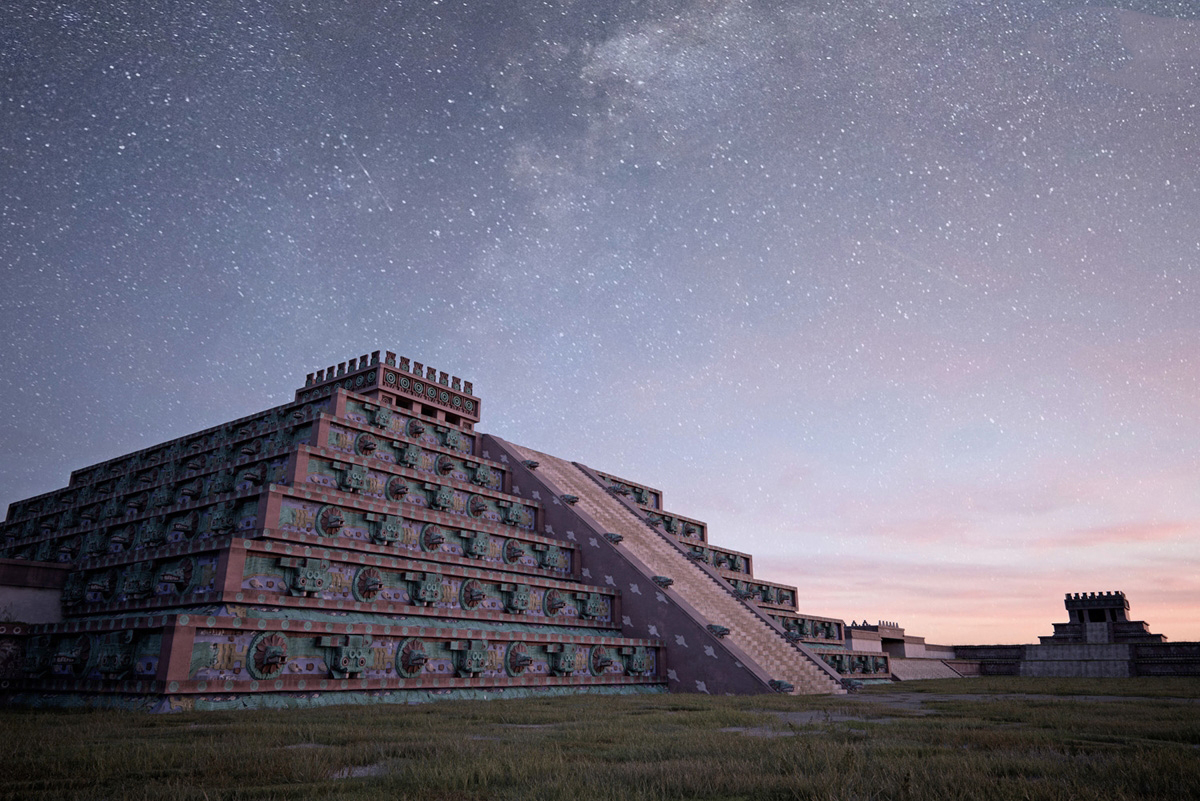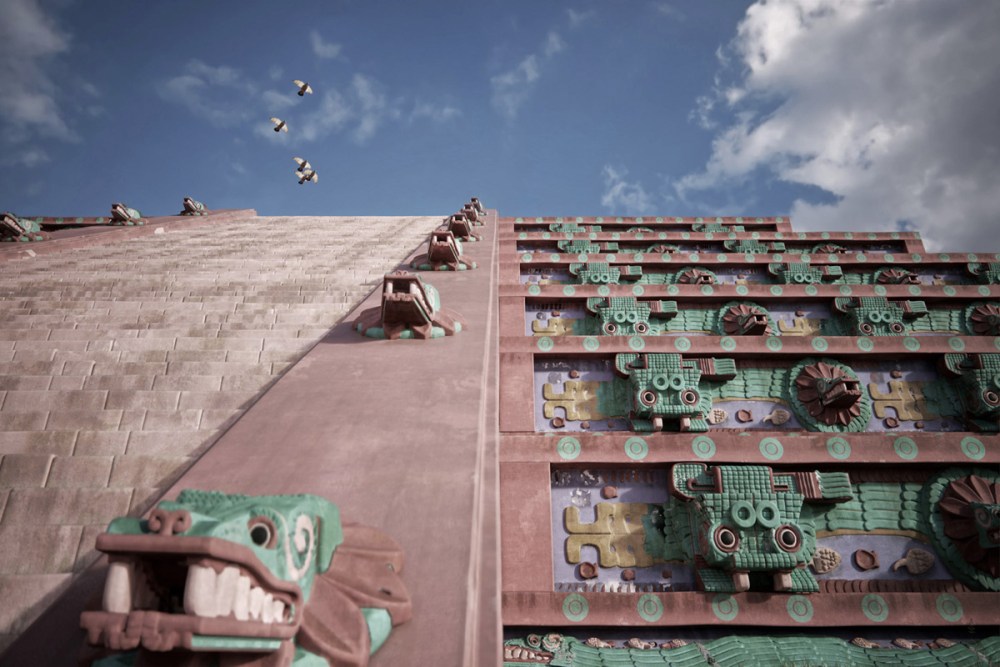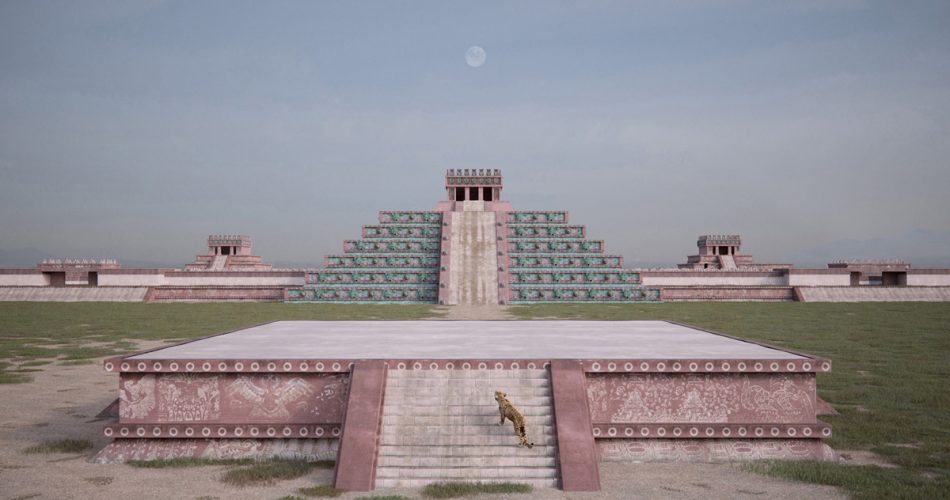Check out this stunning recreation by architect and artist David Romero, as he takes us on a journey through what Teotihuacan, Mexico’s most famous pyramid city, may have looked like more than 1,500 years ago.
Located in the State of Mexico, around 45 km northeast of the Mexican capital, lie the ruins of the ancient city of Teotihuacan. It is a city worthy of the gods, and its name reflects that: Teōtīhuacān is a name given to the ruins by the Nahuatl-speaking Aztecs centuries after the city’s fall. It translates to “birthplace of the gods” or “the place where gods were born.”
Teotihuacan stands out for its impeccable planning—aligned with the cosmos—and, at its peak in the 6th century, was home to around 150,000 people, making it an economic, political, and cultural epicenter in the heart of Mesoamerica. Despite decades of study, many mysteries remain. We still don’t know exactly when the city was founded, who built it, what its original name was, or how its massive pyramids were constructed.
What is known about one of the first Mesoamerican metropolises is based on the interpretations made by the Mexica (Aztecs) and the remnants and paintings left by Teotihuacan’s ancient inhabitants, who abandoned the city in the 7th century.
The knowledge collected over the years is substantial, and with the intent to create a visual reconstruction of what is currently known, architect and 3D artist David Romero digitally rebuilt and decorated the city.
Romero meticulously recreated three of Teotihuacan’s most iconic structures: the Pyramid of the Sun, the Pyramid of the Moon, and the Citadel. The result is a never-before-seen view of one of Mesoamerica’s lost cities.

An artists recreation of one of the pyramids at Teotihuacan. Image Credit: David Romero.
Bringing Teotihuacan Back to Life
To ensure accuracy and faithfully represent Teotihuacan, Romero worked with researchers from INAH and ENAH. On one hand, he maintained the forms and elements known to have been part of the city’s design, such as the slope-and-panel style of the pyramids. On the other hand, he took some creative liberties where uncertainties remain. For example, it is not yet clear whether the Pyramid of the Feathered Serpent had six or seven levels, so Romero chose to recreate a step pyramid with six superimposed structures.
His sources of inspiration included jaguars and other animals that roamed the area 1,500 years ago. He also drew from the large fresco murals found in four residential complexes surrounding the ceremonial center: Atetelco, Tepantitla, Tetitla, and La Ventilla.
Teotihuacan features numerous stunning murals dating back over 1,500 years. While some of the paintings have been damaged by the passage of time, many have been carefully restored by experts. These restorations have preserved the vibrant use of colors such as blue, black, red, and white.
The compositions depict scenes from daily life, cosmogony, and the deities of Teotihuacan’s ancient inhabitants. Some pieces even suggest the presence of Maya nobles in the city, as they contain characteristic glyphs from the southeast.

A recreation of what the temples of Teotihuacan may have looked like according to artist David Romero.
A City of Gods
Teotihuacan was truly a city worthy of gods. It was the largest city in pre-Columbian America and housed hundreds of thousands of people. Some experts suggest that, during its peak, it may have been one of the six largest cities in the world.
Home to three striking pyramids, which are the city’s symbols, Teotihuacan is also known for the Avenue of the Dead: a central road 45 meters wide and 2 kilometers long. The name “Avenue of the Dead” (Avenida de los Muertos) was given by the Aztecs, who mistakenly believed the smaller talud-tablero platforms were tombs. In reality, these platforms were ceremonial, and temples once stood atop them.
Teotihuacan is home to the Pyramid of the Sun, the Pyramid of the Moon, and the Temple of the Feathered Serpent (Quetzalcoatl). The Pyramid of the Sun, the largest structure in the city, is considered one of the five largest pyramids in the world by volume.

